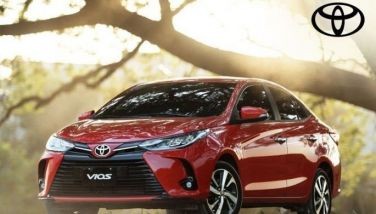BMW expands diesel technology with the BMW 530d
September 10, 2003 | 12:00am
 When Rudolf Diesel invented the self-igniting combustion engine over 100 years ago, the first diesel engine produced seemed destined for use exclusively as a stationary power generator by virtue of its size and slow speed of operation. But Diesel’s original intention of using his engine to drive cars eventually came to fruition, after the concept had proved its viability in commercial vehicles through advances in terms of speed.
When Rudolf Diesel invented the self-igniting combustion engine over 100 years ago, the first diesel engine produced seemed destined for use exclusively as a stationary power generator by virtue of its size and slow speed of operation. But Diesel’s original intention of using his engine to drive cars eventually came to fruition, after the concept had proved its viability in commercial vehicles through advances in terms of speed.
Through successive stages of technical refinement, the 24 percent efficiency of the original engine built in 1897 was increased to a level of 55 percent in modern engines in stationary operation. The engine speed — just over 100 revs per minute in the earliest model, was increased to 5,000 revs per minute.
With these changes and improvements, the first diesel-driven car was unveiled to the public in 1936. Slowly, the diesel engine began to acquire a significant share of the automotive market until it blossomed in popularity in the early 1970s.
The crux of the diesel engine’s utility value is its economy. Its high level of efficiency is attributable to the combustion process where the mixing of air and fuel takes place inside the chamber. As a result of the self-ignition due to the high compression ratio, the diesel can operate without the need for a homogeneous fuel-air mix as the petrol engine. This process involving internal mixture formation and a high charge of air also means that, even at low speed, the air intake remains unrestricted, without any throttling loss. These factors together give the diesel engine its undisputed lead as the most economical of all internal combustion engines.
In recent decades, BMW has remained at the forefront of efforts to improve the basic properties of the diesel engine. Apart from delivering economy and efficiency, BMW strived to improve power and performance as well. Soon enough, after enhancing dynamics and acoustics, the decision was then taken to implement series production of BMW diesel fuelled cars. This led to the foundation of the BMW engine factory in Steyr, Austria, where BMW’s diesel engines have been developed and built ever since 1980.
These days, the turbocharged, direct injection diesel engines from BMW are shining examples of modern technology — starting from the four-cylinder engine of the 320d to the world’s first and ultra-powerful V8 diesel engine of the 740d. And this September, BMW will introduce to the Philippines the new BMW 530d — a genuine power diesel in the executive class.
The new BMW 530d is fitted with one of the most powerful high-performance six-cylinder diesel engines in the world. It boasts of an amazing maximum output of 160 kW/218 bhp and maximum torque of 500 Nm/369 lb-ft. Furthermore, the BMW 530d can accelerate from 0—100 kilometres in just 7.1 seconds and achieve a top speed of 245 kilometres per hour. This represents an increase in output by well over 12 per cent and a boost in torque by 22 per cent over the previous model.
And yet all this power comes with a fuel-efficient consumption in the composite EU cycle of 9.0/6.9/9.5 litres/100 kilometres. This exemplary combination of superior output and torque with equally superior fuel efficiency and unparalleled refinement is based on the straight-six design principle featuring second-generation common rail fuel injection.
The common rail, as the name indicated, is a common pressure vessel for all cylinders supplying the injection jets with compressed fuel. The currently most advanced system operates at a system pressure of 1,600 bar and features volume control to speed up the injection process and atomise the fuel injected even more efficiently in the interest of enhanced performance and greater fuel efficiency.
To capitalise on the potentials offered in particular by the latest generation of common rail technology, BMW’s specialists have further enhanced Digital Diesel Electronics in the DDE5 generation with 32-bit architecture, 1.5-megabyte memory, and operating cycle frequency of 40 megahertz.
DDE5 is also able to process the commands sent to the automatic cruise control.
DDE5 also masterminds the rapid-heating system using electronically controlled 6-volt low voltage spark plugs with only the tip raised to maximum temperature and therefore offering automatic, spontaneous engine starts without preheating.
Given all these, the BMW 530d offers a quiet, efficient, and dynamic drive, clearly representing a diesel-fuelled vehicle at its finest. Perhaps even Rudolf Diesel couldn’t ask for more.
BrandSpace Articles
<
>
- Latest
Latest
Latest
March 15, 2024 - 3:12pm
March 15, 2024 - 3:12pm
February 15, 2024 - 1:10pm
February 15, 2024 - 1:10pm
January 29, 2024 - 5:25pm
January 29, 2024 - 5:25pm
January 24, 2024 - 2:30pm
January 24, 2024 - 2:30pm
Recommended

























